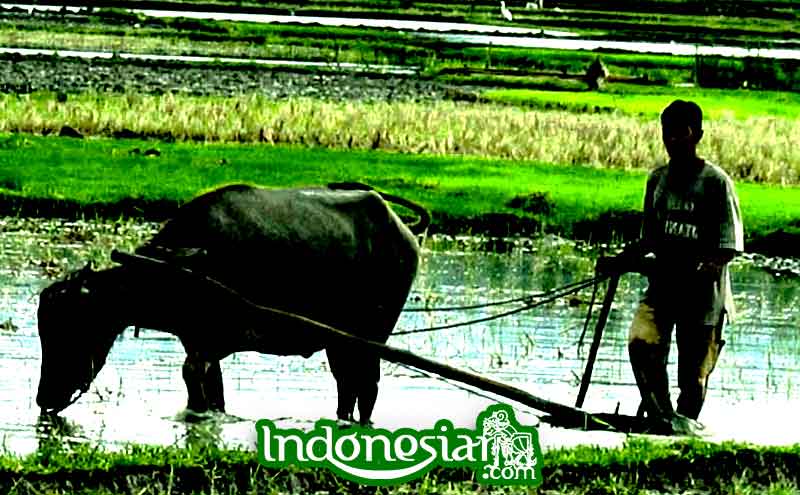News & Events
Endangered Animals Found in Indonesian Sumatra Forests
- December 13, 2020
- Posted by: ASEAN
- Category: INDONESIA

Indonesia is an archipelagic country that has a wide variety of animals. In the Bukit Barisan area on the island of Sumatra, there are various endangered and protected species. This includes the Sumatran forest goat or the Latin name Capricornis sumatraensis. This animal is also known as Sumatran Serow and is endemic to Sumatra. It is one of six types of forest goats in eastern Asia.
Unlike goats in general, he has more muscular physical characteristics. Its body is covered in thick and coarse hair with a grayish black color, at first glance it looks like a calf. The muzzle also resembles that of a buffalo. The horns are slender, short and straight back like the horns of an antelope with an average length of 12 to 16 centimeters (cm). Weight between 50-140 kilograms and body length between 140-180 cm. As adults, they can reach 85-94 cm in height.
This animal is shy and lives solitary or likes to be alone, especially the male. To mark a territory under their control, this goat will issue dirt and urine. He will actively go around looking for females when he enters the mating season between October and November. The gestation period lasts seven months. A mother goat can give birth to one child.
The maximum lifespan of this rare animal is around 20 to 21 years for males, and 21 to 22 years for females. Despite spending more time on land, Capricornis sumatraensis is also known as an accomplished swimmer. Uniquely, this goat is also known as an agile animal climbing steep slopes where usually only humans can reach with the help of a rope.
They are active in the morning and evening. At noon, rest in the shade behind large rocks or caves. The main source of food is nutrient-rich plants. It lives at an altitude of 200 meters to 3,000 meters above sea level. Its habitat is in the form of primary and secondary forest near mountains or limestone hill areas.
The population can still be found in the Gunung Leuser National Park (TNGL), Kerinci Seblat National Park (TNKS), Batang Gadis National Park (TNBG), and the Bukit Barisan National Park. Apart from Indonesia, forest goats from Sumatra can also be found on the Thailand-Malaysia Peninsula.
A study on Sumatran forest goat populations was conducted by an international conservation organization, the International Union for the Conservation of Nature and Natural Resources (IUCN) in the mountainous regions of Sumatra and the Malaysian highlands in late 2007. According to one of the researchers from Australia, JW Duckworth, The general population of Sumatran forest goats has continued to decline by more than 30 percent since the last 21 years. Illegal hunting of Sumatran forest goats and illegal logging in their ecosystem, thus eliminating the main source of food are one of the causes of the continued decline in the population of this accomplished climber. Not only that. They have also become a source of food for big cats such as the leopard (Panthera pardus) and the Sumatran tiger (Panthera tigris).
In Indonesia, there is no official record of how many populations of Sumatran forest goats are left. The head of the TNBG, Sahdin Zunaidi, stated that his party had started a census activity on the presence of this animal. Moreover, the government has included Sumatran forest goats as protected animals based on Government Regulation Number 7 of 1999. IUCN has also included Sumatran forest goats in the list of Vulnerable (Vulnarable / VU) categorized animals Redlist in 2008.
This animal has appeared several times and entered residential areas, especially when Mount Sinabung in North Sumatra erupted. In 2013, residents of Beras Tepu Village, Simpang Empat District, Karo Regency found a Sumatran forest goat strayed into the yard of a resident’s house. His body condition is thin and limp. The residents initially thought this animal was the resident’s goat. In 2016, a farmer in Toba Samosir also found this animal lost on the edge of the forest.
Also a resident in Sopotinjak, Mandailing Natal Regency on January 18, 2020, saw this Sumatran forest goat stray into a residential area. Then on May 28, 2020, the management of the TNGL Center uploaded information on the whereabouts of two Sumatran forest goats that were recorded on camera. From the video recording, it appears that the two of them are a pair of male and female forest goats. The awareness of all parties, including the community, is needed to take part in preserving this endangered species in order to maintain Indonesia’s wealth and biodiversity. Come on, get other interesting information from Indonesiar.com.
Leave a Reply Cancel reply
You must be logged in to post a comment.